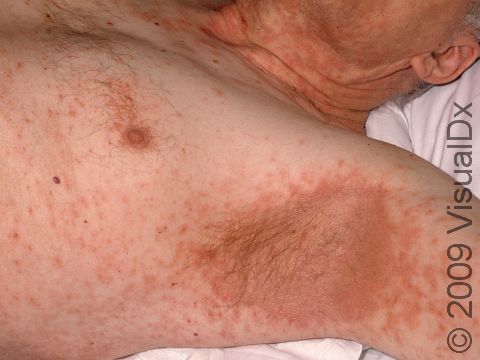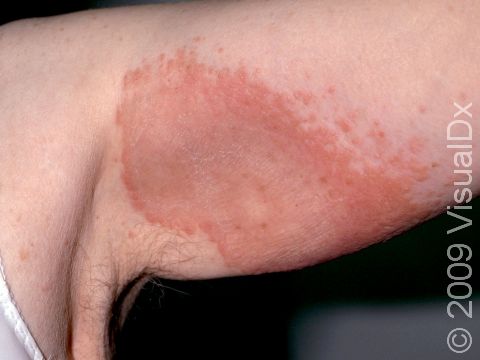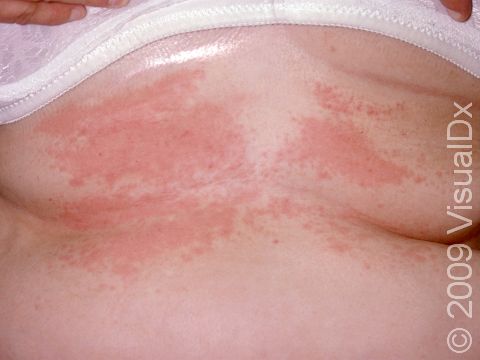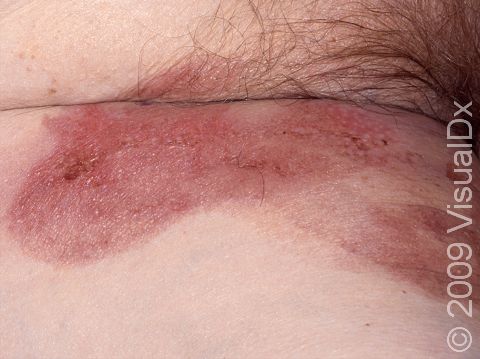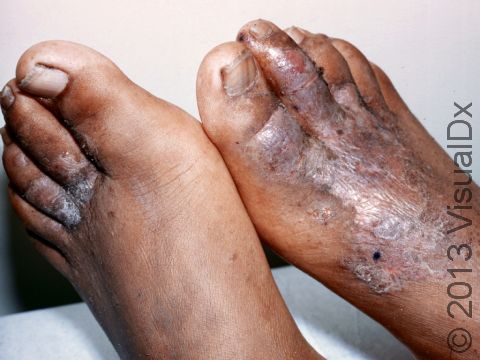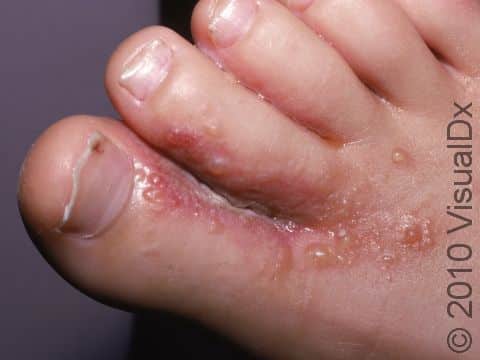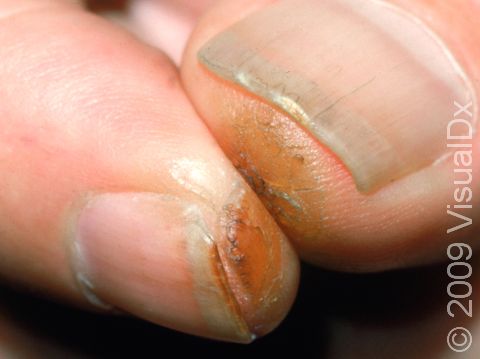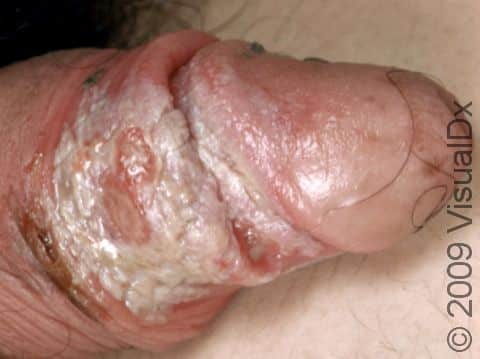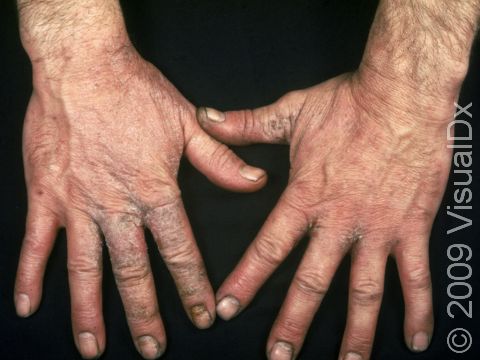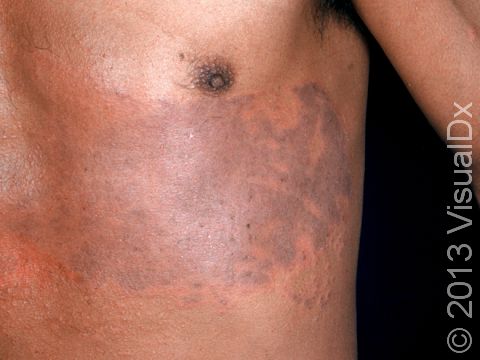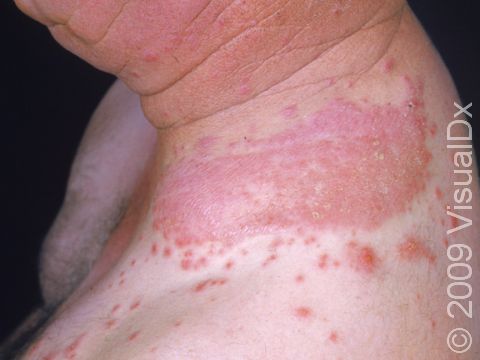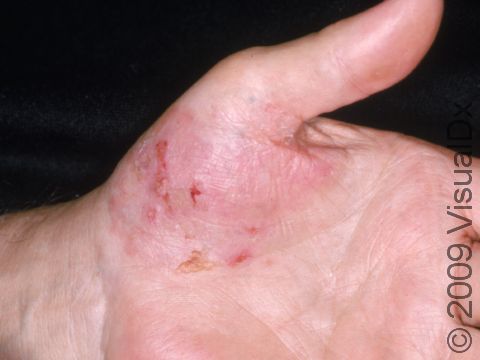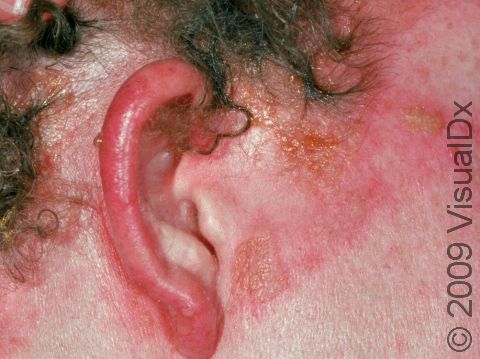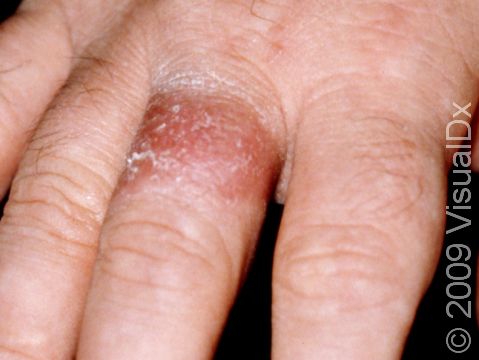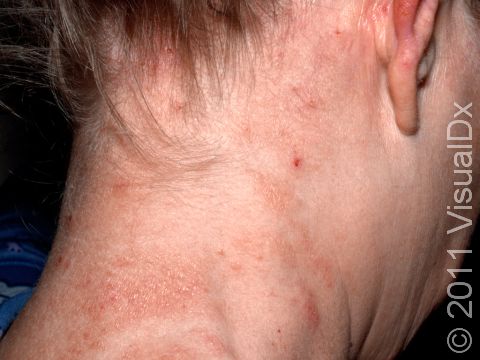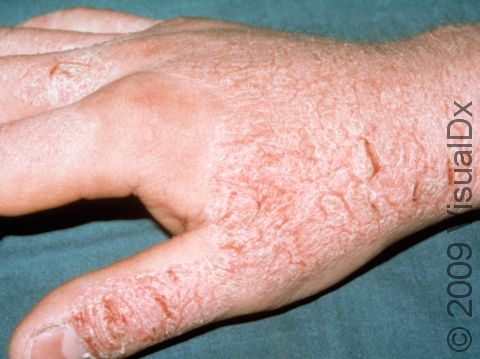Irritant Contact Dermatitis
Irritant contact dermatitis is an inflammatory rash caused by direct chemical injury to the skin. Unlike allergic contact dermatitis, which appears 48–72 hours after exposure to an allergen, the symptoms of irritant contact dermatitis can result within a few hours if the exposure is a strong irritant.
- Patients typically present complaining of a burning or stinging early in the course of irritant contact dermatitis.
- As the irritation becomes chronic and the skin becomes continually inflamed, itching can become a predominant symptom.
Who's At Risk?
Irritant contact dermatitis can occur at any age.
- Patients with a history of eczema (atopic dermatitis) are particularly predisposed.
- Environmental factors include frequent hand washing and repeated exposure to water, solvents, fiberglass, mild acids, and alkalis.
- Dry air can predispose to irritant contact dermatitis.
Signs & Symptoms
The most common location for irritant contact dermatitis is the hands, though any body surface can be involved, including the genitals.
- Lesions can appear pink to red.
- In chronic cases, affected areas may develop scale and cracks.
- In acute cases, areas may have a sharp border corresponding to the areas of chemical exposure.
- On the fingertips, peeling of the skin, cracks, and scaling may be noted.
Self-Care Guidelines
- Remove the offending exposure and protect the skin from re-exposure.
- For irritated skin in body folds, consider a barrier cream with zinc oxide paste, such as Desitin®.
Treatments
- Your physician may recommend that you use petroleum jelly or a thick moisturizing cream applied directly to wet skin after bathing. Apply frequently (at least twice daily) to moisturize and protect the skin.
- Mild- to mid-potency topical steroids may be prescribed if inflammation is pronounced.
Visit Urgency
Seek medical evaluation for a rash that does not resolve with self-care measures.
Trusted Links
References
Bolognia, Jean L., ed. Dermatology, pp.227, 241-249. New York: Mosby, 2003.
Freedberg, Irwin M., ed. Fitzpatrick’s Dermatology in General Medicine. 6th ed, pp.1309-1314, 2370. New York: McGraw-Hill, 2003.
Last modified on October 11th, 2022 at 2:38 pm

Not sure what to look for?
Try our new Rash and Skin Condition Finder
